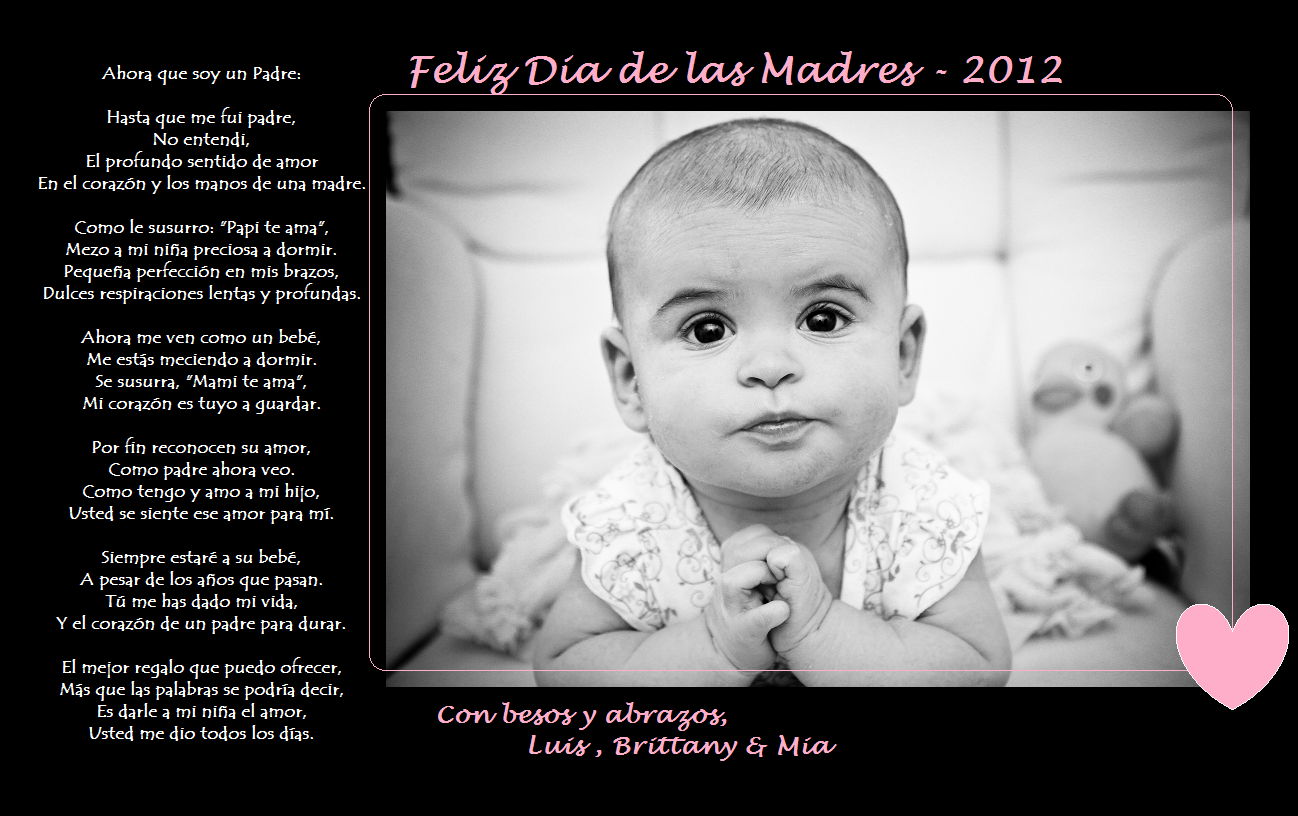As a parent, expressing your affection for your child is natural. Whether you’re writing a heartfelt letter or simply conversing with friends and family, knowing how to convey “my beautiful daughter” in Spanish is essential. In this comprehensive guide, we will delve into the nuances of this endearing phrase, exploring its cultural significance, grammatical structure, and various forms of expression.

Image: www.pinterest.ph
“Mi Preciosa Hija”: A Tender and Loving Expression
In Spanish, “my beautiful daughter” is most commonly translated as “mi preciosa hija.” “Preciosa” holds a profound meaning beyond mere physical beauty. It encompasses qualities such as sweetness, innocence, and preciousness. This term of endearment is often used in a context of deep affection and admiration, reflecting the special bond between a parent and their daughter.
Variations and Cultural Nuances
While “mi preciosa hija” is the most common expression, there are several other variations used in different Spanish-speaking countries and regions:
- Mi niña hermosa: This phrase translates as “my beautiful girl” and is commonly used in Spain.
- Mi princesa: Meaning “my princess,” this term of affection expresses the father’s perception of his daughter as a beloved and cherished member of the royal family.
- Mi sol: Literally meaning “my sun,” this phrase conveys the idea that a daughter brings light and joy into her father’s life.
- Mi tesoro: Translating as “my treasure,” this term emphasizes the immense value and priceless nature of a daughter in her father’s eyes.
Grammatical Structure
The phrase “mi preciosa hija” follows the possessive adjective + noun structure common in Spanish:
- Mi: The possessive adjective for “my” (first-person singular)
- Preciosa: The feminine form of “precioso” (beautiful), which agrees in gender and number with “hija”
- Hija: The noun for “daughter” (feminine)

Image: quotesgram.com
Other Forms of Expression
In addition to the literal translation, there are other ways to express “my beautiful daughter” in Spanish:
- Mi vida: Meaning “my life,” this phrase highlights the daughter’s importance to her father and his belief that she is the center of his world.
- Mi alma: Translating as “my soul,” this term implies a deep and spiritual connection between a father and his daughter.
- Mi alegría: Meaning “my joy,” this phrase conveys the daughter’s ability to bring immense happiness to her father’s heart.
Latest Trends and Developments
In recent years, there has been a growing trend towards using more gender-neutral terms of endearment in Spanish. For example, instead of “mi preciosa hija,” some parents may opt for “mi precioso hijo” (my precious child), thus avoiding the use of gendered language.
Tips for Expressing Affection
1. Use Meaningful Phrases: Choose terms of endearment that genuinely reflect your feelings and the special bond you share with your daughter.
2. Be Consistent: Use the same term of endearment over time to create a sense of familiarity and warmth.
3. Speak from the Heart: When expressing your affection, let your words come from a place of love and admiration.
Frequently Asked Questions
Q: What is the most common way to say “my beautiful daughter” in Spanish?
A: Mi preciosa hija
Q: Are there other affectionate terms used to address a daughter?
A: Yes, such as mi niña hermosa, mi princesa, mi sol, and mi tesoro.
Q: How do I choose the right term of endearment?
A: Consider your daughter’s personality, your cultural background, and the specific situation.
How To Say My Beautiful Daughter In Spanish
Conclusion
Expressing “my beautiful daughter” in Spanish is more than just using a translation. It is about conveying the depth of your love, admiration, and pride. Whether you choose the traditional “mi preciosa hija” or opt for a more creative term, remember that the most important element is the sincere affection behind your words. Cherish your bond with your daughter, and let the language of love bridge any cultural or linguistic differences.
Are you interested in learning more about expressing affection in different languages? Share your thoughts in the comments below!